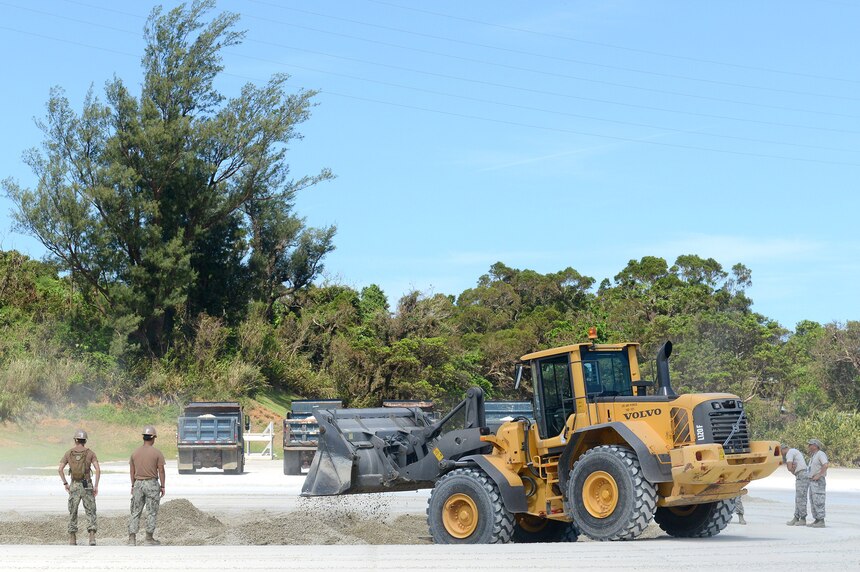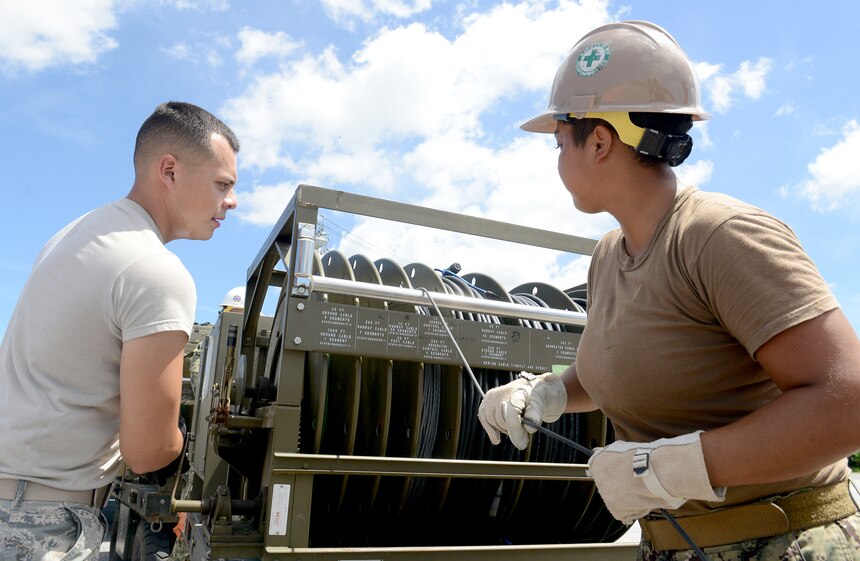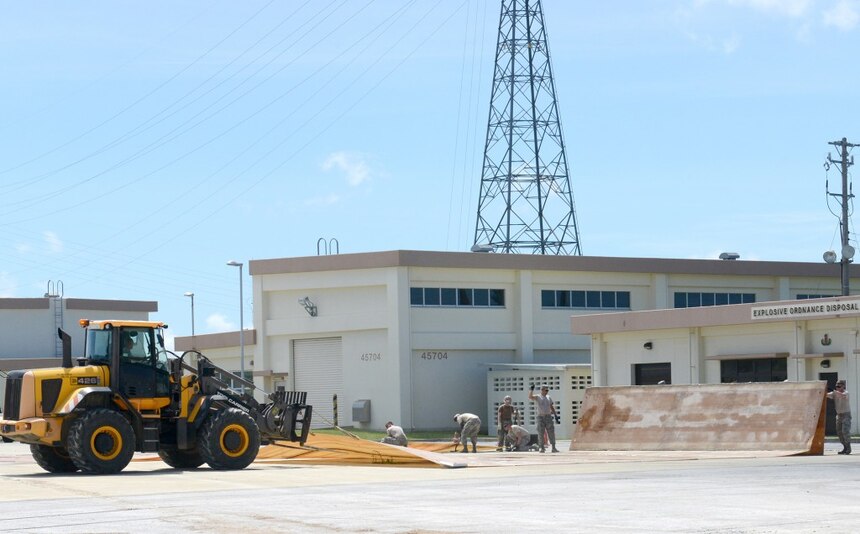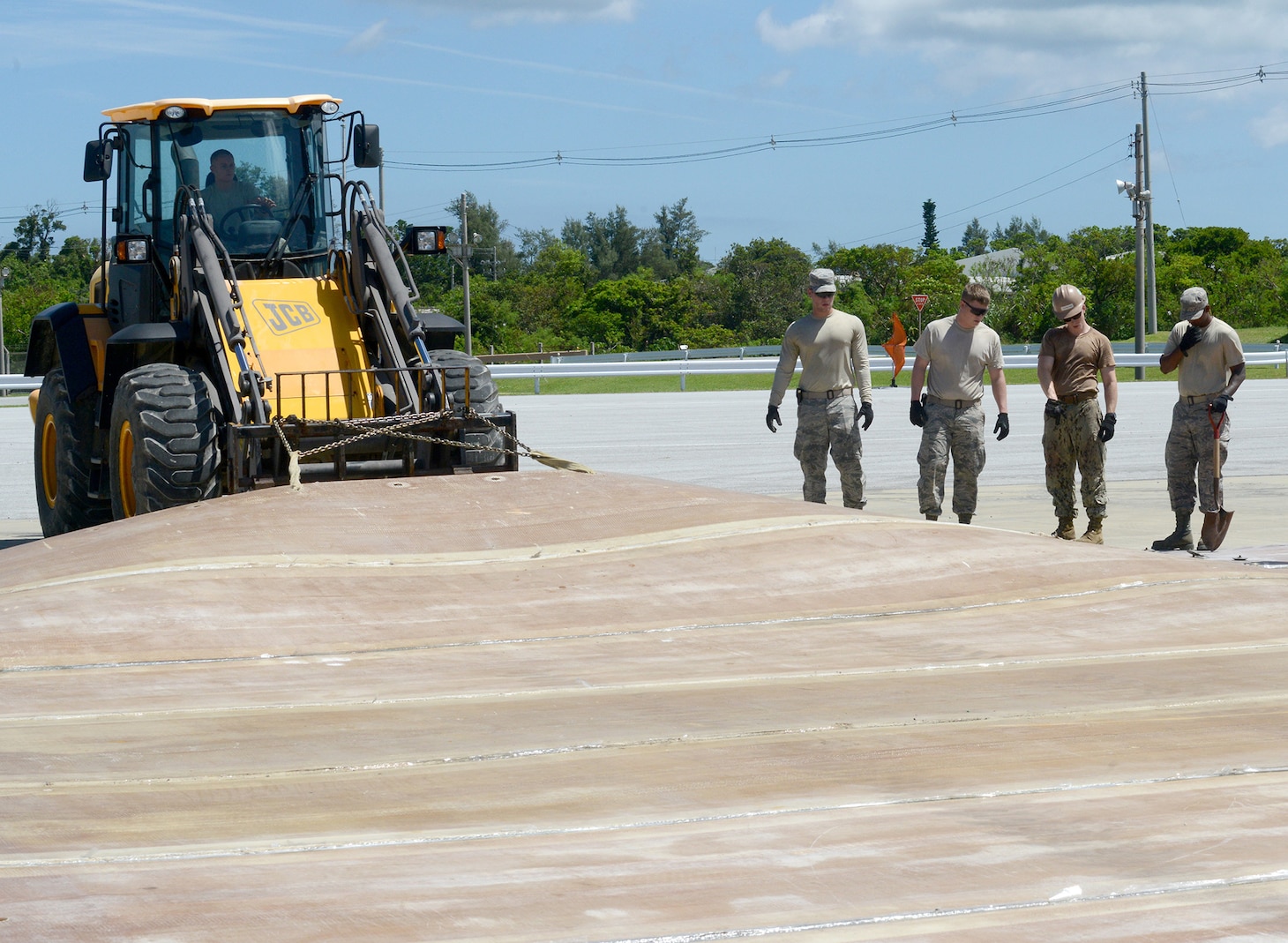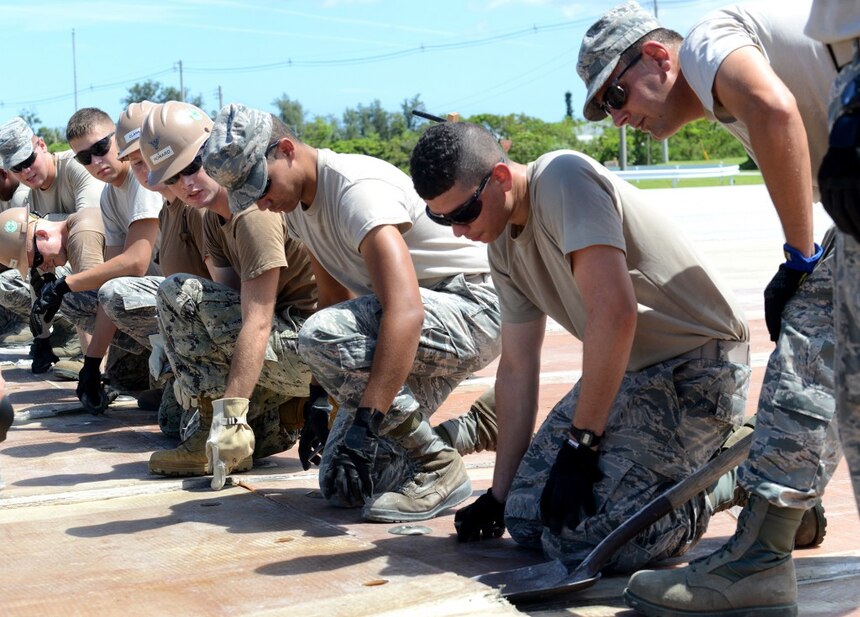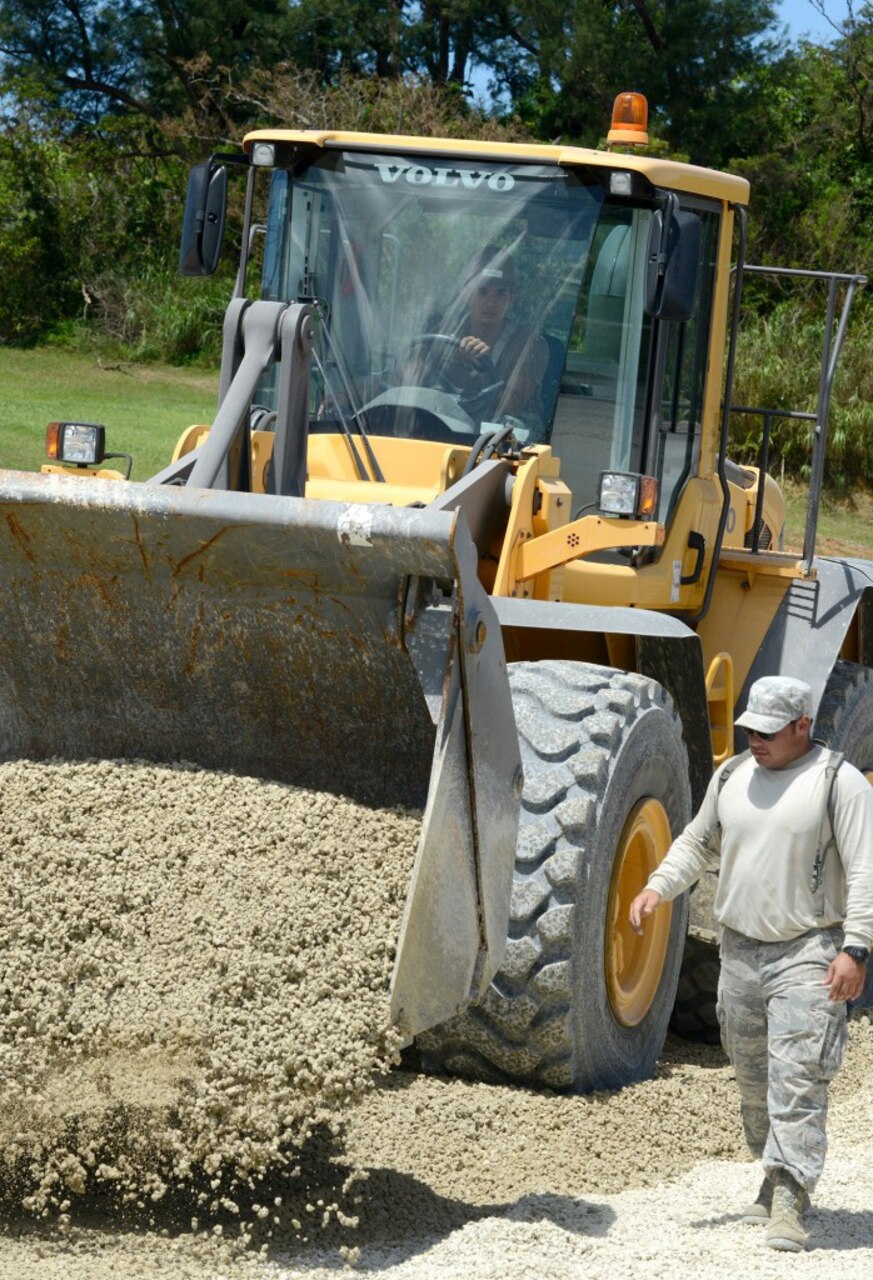By Seabee Magazine, / Published Aug. 13, 2015
By Staff Sgt. Maeson L. Elleman, 18th Wing Public Affairs
NMCB 5 Seabees and Airmen from 18th Civil Engineering Squadron work together to repair a runway during airfield damage repair, joint contingency training on Kadena Air Base, Okinawa, Japan, July 23. (Photo by MC1 John P. Curtis/150723-N-SD120-002)
Airmen from the 18th Civil Engineer Squadron worked side-by-side with Navy Seabees from Naval Mobile Construction Battalion (NMCB) 5 during joint airfield damage repair (ADR) training, Kadena Air Base, Okinawa, Japan, July 23.
The ADR training gave the two forces the opportunity to gain familiarity with one another while practicing skills they could potentially implement in a wartime environment.
NMCB 5 Seabees and Airmen from the 18th Civil Engineering Squadron work together to assemble folded fiberglass mats during airfield damage repair, joint contingency training on Kadena Air Base, Okinawa, Japan, July 23. (Photo by MC1 John P. Curtis/150723-N-SD120-007)
"It's always good training," said Construction Electrician 1st Class Dean Cuenca, NMCB 5 assistant NCO in charge of the training. "It's great to carry out the mission that the Navy has for the Seabees andexperience what's outside of the United States. Joint exercises are always great being that we might do something different than our brothers and sisters might do. It's a great opportunity."
According to Cuenca, the training isn't a frequent occurrence for the Seabees. However, he said it's an experience that shouldn't be taken lightly.
"This is a good opportunity to integrate with our brothers and sisters in the Air Force to see how their TTPs (tactics, techniques and procedures) and their scheme of maneuvers go," he said. "As far as airfield damage repair goes, a lot of services have an ADR organization, and it's just our way to view how the Air Force conducts or executes their mission. We have our way; we come here with an open mind to see how the Air Force does it and maybe implement that into our team training."
During the scenario, the engineers practiced all the steps required to rapidly repair a damaged runway to ensure aircraft can continue to take off. This ensures that even if Kadena was attacked it could do what it does best: provide unmatched combat power to the Indo-Asia-Pacific region. To accomplish that, the Airmen and Sailors took to the controls of heavy machinery in order to fill a previously dug 50-foot crater with surrounding debris.
Airman 1st Class Christian Rosa, 18th Civil Engineering Squadron, shows CECN Jasmine Hallaxrouanet, NMCB 5, how to reel in emergency airfield lighting system cables during airfield damage repair, joint contingency training on Kadena Air Base, Okinawa, Japan, July 23. (Photo by MC1 John P. Curtis/150723-N-SD120-008)
Next, dump trucks supplied the workers with more filler, where the machinery was used to shape and level the hole to certain measurements before also being pressed into place by a roller and covered with a fiberglass sheet.
Though many of the procedures are similar for both services, the Air Force has a more extensive set of training that allows integration of airfield lighting systems into the repair.
According to Cuenca, the different services go to the same technical training school to learn ADR procedures. However, once the Sailors graduate, the Airmen remain behind to continue training on the airfield lighting systems.
"Right now, for a lot of the personnel going to learn this skill, it's beneficial to them because if we do our ADR mission if it's something they encounter later on in the future it's something they're already exposed to by doing this training with the Air Force," Cuenca said.
NMCB 5 Seabees and Airmen from the 18th Civil Engineering Squadron work together to assemble folded fiberglass mats during airfield damage repair, joint contingency training on Kadena Air Base, Okinawa, Japan, July 23. (Photo by MC1 John P. Curtis/150723-N-SD120-010)
It's this partnership with another branch of the U.S. military that's a vital component to future joint operations.
"It's really all about consistency and chemistry," said 2nd Lt. David Brown-Dawson, 18th Civil Engineer Squadron operations engineer. "If we were to be attacked, that very well could be what happens in real-world situations. Being able to have that chemistry we already built through these training sessions that just helps us even more to accomplish the mission more effectively if that comes to pass."
Brown-Dawson said despite the challenges of working with another service, he hopes the two services can work together again in the near future.
"There are always differences," he said, "but I think we're all coming together, and I think that's been the biggest piece coming together for the sake of the mission. I think it's very important for us to train. This is a joint environment, this is a joint community and we have joint missions. To be able to train together is important to the success of our missions."
NMCB 5 Seabees and Airmen from the 18th Civil Engineering Squadron work together to assemble folded fiberglass mats during airfield damage repair, joint contingency training on Kadena Air Base, Okinawa, Japan, July 23. (Photo by MC1 John P. Curtis/150723-N-SD120-012)
Airman 1st Class Tom Clark, 18th Civil Engineering Squadron, guides EO3 Patrick Heng, NMCB 5, as he uses a loader to fill a crater during airfield damage repair, joint contingency training on Kadena Air Base, Okinawa, Japan, July 23. (Photo by MC1 John P. Curtis/150723-N-SD120-014)
